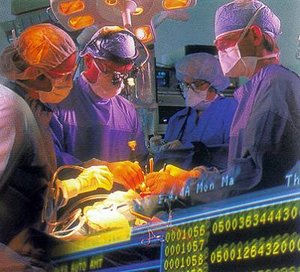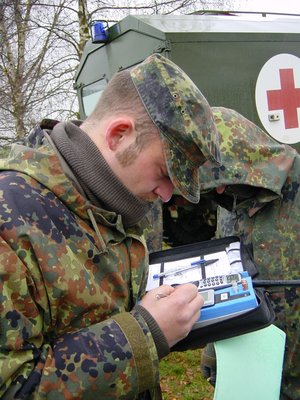ehealth for Europe
Satellites and the European Space Agency may not be the first thing that comes to mind when thinking of improving health, yet there are many ways in which ESA and its programmes contribute to improving health care.
- In emergency situations or in remote areas satellites are used to transmit images and information on the sick or injured to medical specialists thus allowing them to advise local medics on treatment or even guide them through an operation.
- Through its Human Spaceflight Programme ESA monitors the health of astronauts in space, and uses the unique opportunities offered by the absence of gravity to carry out medical research.
- ESA’s Technology Transfer Programme encourages the adaptation of space technology for other uses, many of which are medical. For instance space technology is used in heart operations, in dentistry, to detect melanomas and in many areas of medical research.
Some ways in which eHealth can help Europeans

Less time spent in waiting rooms
Many visits to doctors and hospitals are for routine checkups or just to collect a repeat prescription. With eHealth many of these services could be done or requested from home.
Household electronic equipment, such as phones, televisions, remote controls and computers, can be used to take and transmit data such as temperature, blood pressure and sugar level to a central medical centre for examination and checking against existing health records. For instance some mobile phones already have electrodes on the back enabling them to be used as an electrocardiogram. Prescriptions could also be sent electronically to local pharmacists ready for immediate collection.
Imagine the time saved and the queues avoided. Even more important, by cutting down on the number of routine visits and the paperwork that has become the bane of modern medicine, more time, money and resources could be dedicated to helping the seriously ill.
Helping the old and the infirm
For the old and the disabled visiting the doctor is not just time consuming, it can also be extremely difficult. eHealth can help this section of society - and those who care for them - by enabling patients to transmit health data without having to leave their home. Specialist medical centres, with electronic access to patients’ medical records, will then immediately check the data and ensure that all is well.
Patients intimidated by electronic equipment can be personally guided through the different steps by phone or through monitors. This will ensure that the service is ‘user friendly’ and could offer more frequent contact with patients unable to leave their homes.

Intensive care for those who need it
Centralisation of records plus remote access to health data will ensure the best use of limited resources such as intensive care units. On occasion patients are transferred to these units unnecessarily as doctors are unable to check all existing medical records before admitting a patient to hospital. With eHealth, all hospitals with intensive care units within a certain area can be grouped together and share remote access to patients’ data. In this way beds in intensive care units wwould be given to those most in need.
Medical care wherever you are
Even when away from home, on holiday or on business, it will still be possible to be treated by your local doctor by using communications technology. In cases of severe illness requiring hospital attention, medical records can be transferred immediately to the hospital responsible for carrying out treatment to enable them to check on previous treatment and medication.
Prevention better than cure
Telecommunications are a good way of promoting health care. There are already many websites that help people to lose excess weight, which is a contributing factor in many serious illnesses. On these sites visitors can log in daily to record their weight and receive support, advice and encouragement. These, and similar services, can make an important contribution to preventing illness and reducing the cost of health care.
ESA and the Telemedicine Alliance

For more information contact:
Didier Schmitt
ESA, Head of Life Science Unit
ISS Utilisation and Promotion Division
Human Spaceflight, Microgravity & Exploration
email: Didier.Schmitt@esa.int









